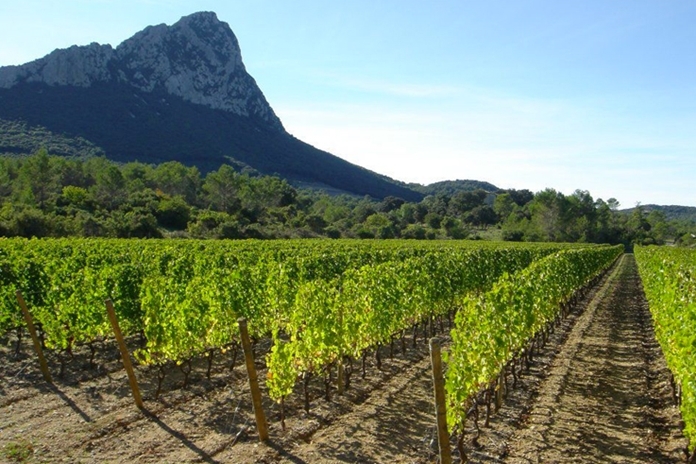
Where, do you think, is the single largest wine-producing area in the world? Australia perhaps? How about California? Well actually, you might be surprised to know that it’s the Languedoc-Roussillon region of Southern France. Before the 1980s it was virtually unknown to wine drinkers outside the country, partly because the entire region (apart from a very few notable exceptions) produced nameless bog-standard wines that often cost less than bottled water. Much of it was converted into industrial alcohol.
However, during the last thirty years, things have changed dramatically. Today the region produces more than a third of the grapes grown in France. The quality of Languedoc (lahng-DOK) wines has improved beyond recognition, while the prices have remained relatively low, except of course in Thailand. Spread in a crescent shape west of Provence, the area now produces a huge range of quality wines and it’s one of the few regions in France where a wine can be named after its grape variety. This is rarely the case in Bordeaux or Burgundy because the grape varieties in those areas are designated by French wine law and everyone knows what they are anyway. For bargain hunters, the Languedoc has become one of the most exciting wine regions in the country. Incidentally, the name Languedoc means the language of oc because the word “oc” was the word for “yes” in the local southern Occitan language.
I’ve written about two other Louis Eschenauer wines in the past; their excellent Cabernet Sauvignon and their equally good Merlot. The name of the company rhymes with “freshen-flower”, more or less and it was set up in 1821 in Bordeaux. If you are wondering why the name sounds so Germanic, it’s because the family originally came from Alsace which, as you may recall is in Eastern France on the banks of the Upper Rhine. In recent years, Eschenauer wines have gathered a following in ninety countries, partly I suspect on the strength of their easy-drinking country-style wines. With wines like this, the vintage year doesn’t matter very much because they are blended for consistency, a fact that might well contribute to their popularity.
Louis Eschenauer Sauvignon Blanc
Now here’s a real little cracker of a wine and a great bargain too. Sauvignon Blanc is sometimes so stringently acidic that you feel it could peel your teeth. Now I know that this can be the nature of Sauvignon Blanc, but quite honestly these tart, harsh wines are simply not much fun to drink.
The taste of this one comes as a pleasant surprise. Perhaps the climate has something to do with it, for there’s absolutely none of the characteristic toe-curling acidity that’s typical of this grape variety. I suppose some purists might complain that the wine-makers have tamed a savage beast into a pet dog, but to my mind it works. The wine has a lovely expressive floral aroma, with reminders of pineapples, gooseberries, apples and tropical fruit. You might even pick up a hint of lemon. It’s a light, dry and fruity easy-drinker and it would make a great party wine, especially at this price.
Although it’s just 12% alcohol content and pleasing enough on its own, I tried it with a rich and creamy Indian navratan korma; a mixture of vegetables and dried fruits in a mild curry sauce. The food and wine matched perfectly.
Louis Eschenauer Chardonnay
This pale gold wine is an identical colour to the Sauvignon Blanc but there the similarity ends. It has a very delicate aroma and so you’ll need to give it some time to emerge, but you’ll get enticing hints of pineapple, peaches and somewhere in the background the faint tang of oranges. It’s not quite as dry as the Sauvignon but it’s the polar opposite of those big, beefy Californian-style Chardonnays that sometimes find their way to these shores. This fresh and fragrant light wine has a delightfully soft mouth-feel; there are bags of fruit on the taste and a pleasingly long finish.
Actually, it tastes a lot more expensive than it actually costs. It’s a dry, very easy drinker (perhaps too easy in my case) but the fruitiness gives a hint of sweetness. There’s hardly any acidity on the taste and it’s quite a bit softer than the Sauvignon. You could of course enjoy it with food, but even at 13% alcohol and served pretty cold, it’s lovely on its own.
If you prefer light wines that are not too acidic or tannic, do give these Southern wines a try. Keep on the watch for other wines from the Languedoc too, for you might come across some terrific bargains.
The wines described in this column are generally available in Thailand, either from local outlets or from online wine suppliers.
 |
 |
 |





